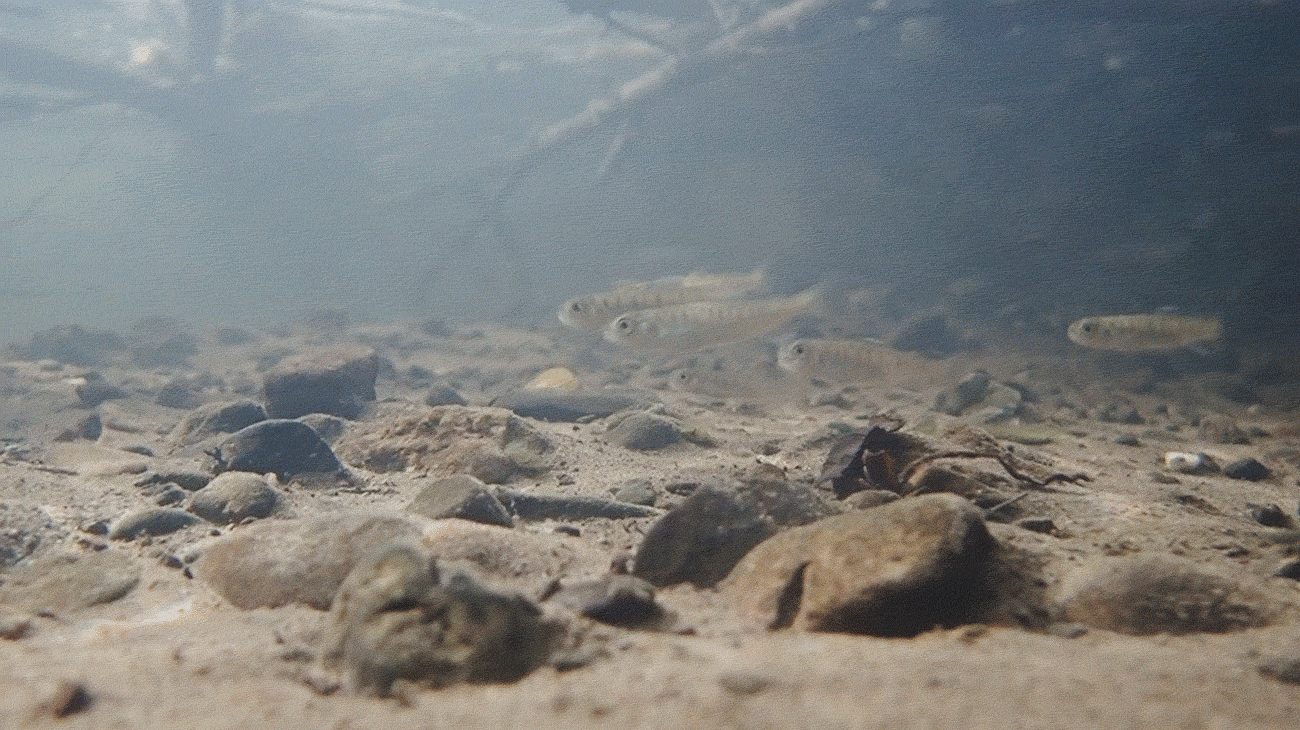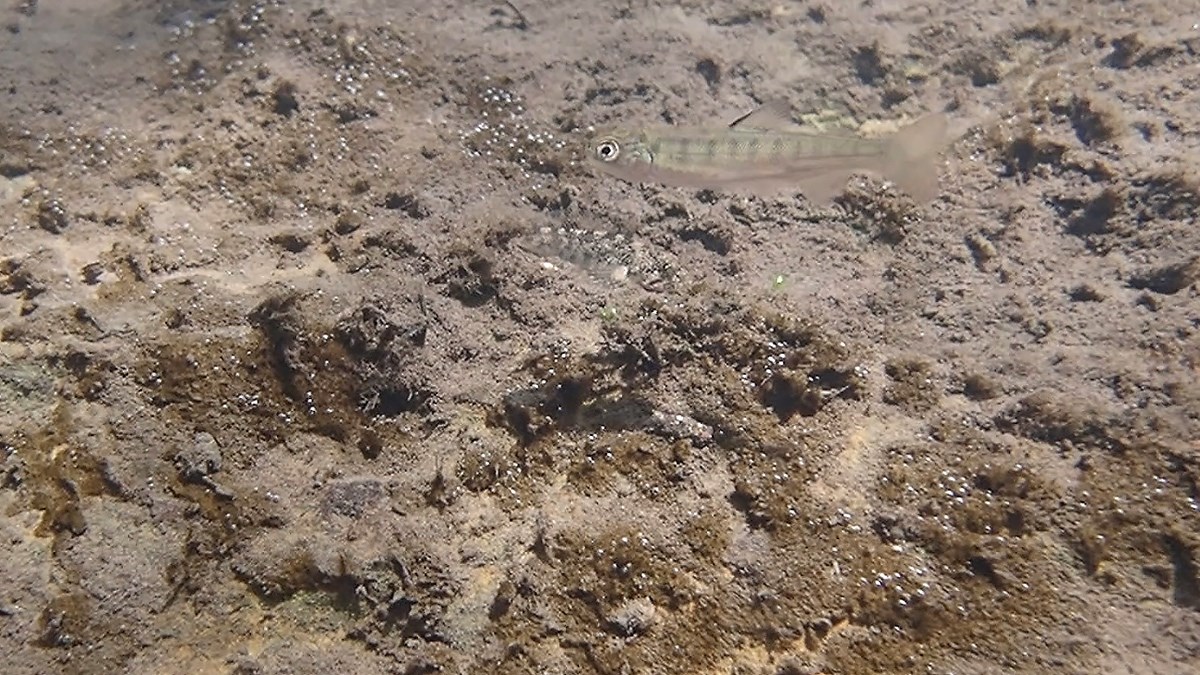Last updated: April 21, 2025
Article
The Fry and the Flow

NPS / Michael Reichmuth
April 2025 - It’s officially that time of year when the young coho, chinook, and steelhead have started emerging from their gravel nests (redds) in the streams monitored by the San Francisco Bay Area Network in Marin County, California. We’ve seen some of these little fry doing well during special winter surveys in Muir Woods National Monument. Hopefully, our summer surveys will show high survival despite challenges like big winter storms.
Depending on water temperature and other factors, it takes about four weeks for steelhead and six–seven weeks for coho eggs to hatch. Before emerging from the gravel, the salmon are called alevin. At this stage, they still have their yolk sacs and are very frail, at less than an inch long. The yolk sac is important for their survival to the next life stage known as fry. The alevin make it to fry stage by ‘buttoning-up’ their yolk sac, where the nutrients are fully absorbed into the abdomen, leaving them with a sort of seam down their bellies.
Fry emerging from the gravel are not yet strong swimmers. They seek refuge from predators and high stream flows under woody debris, roots, rocks, and in deep pools. They usually find these features in calm-water areas like side-channels, backwaters, and along stream margins. In other words, threatened and endangered steelhead and coho fry really benefit from having a meandering creek with a variety of cover types. We recently saw fry utilizing these types of habitats in Redwood Creek while conducting snorkel surveys to evaluate the success of a stream restoration project completed in Muir Woods in 2023. The project was designed to provide more habitat for juvenile coho salmon and steelhead during the winter months, and we’re happy to see it working well!

NPS / Michael Reichmuth
But we can’t yet tell how well the improved winter habitat sheltered salmonid eggs and fry from this season’s storms. Large storms can be concerning for young salmonids for a few reasons. First of all, high amounts of rainfall cause the creeks to rise and water velocity to increase. This can lead to the scouring of stream gravels where redds were laid. Hopefully, the spawning adults dug their redds deep enough to protect the developing eggs inside. High flows also transport fine sediment like silt or clay throughout the stream which can lead to eggs and/or larvae suffocating. We noticed significant sediment accumulation in Olema Creek this winter, as crew members would sink to their knees in some newly-formed sandbars. High-flow conditions can also threaten recently-emerged fry, which can be washed down and out of the creek very easily.
We’ll learn more about how this season’s storms affected the coho and steelhead juveniles during our summer snorkel surveys. It will be this summer, after they develop scales, that fry will enter the next stage of their lives as parr. This stage takes its name from the vertical bars called parr marks that appear on the young fishes’ sides. Parr are typically less than five inches long and feed on freshwater plankton and insects. We look forward to seeing these parr in the summer, and hope to find relatively high survival rates from this winter. They’ll be actively feeding and growing so they’re ready to face the next winter. Coho and steelhead usually spend at least a year in freshwater, so their growth during this early period is crucial. If they can survive until next spring, they’ll hopefully be ready to make their way out to sea.
For more information
- San Francisco Bay Area Network Salmonid Monitoring webpage
- Pacific Coast Science & Learning Center Coho & Steelhead webpage
- Contact Fishery Biologist Michael Reichmuth

